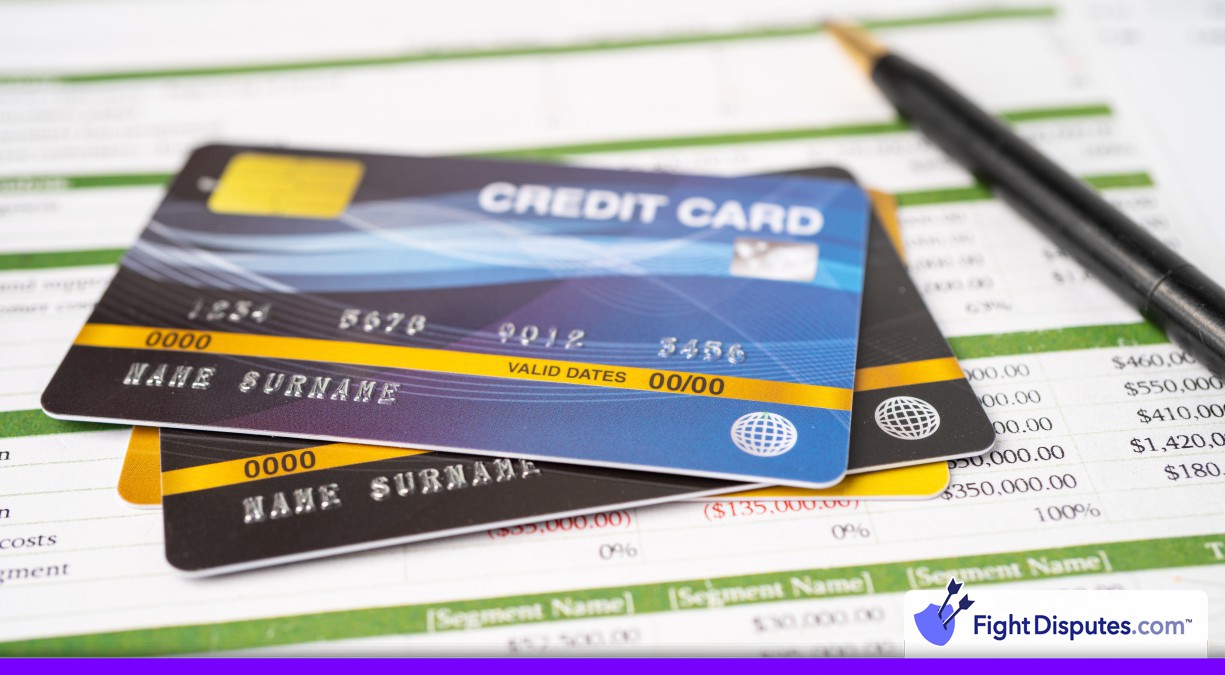13.2: Cancelled Recurring Transaction
Visa chargeback reason code 13.2 is when customers file complaints saying they were still charged for recurring payments even after they had already canceled their subscriptions or memberships.
It’s a code you need to keep a close eye on when your business relies on any type of automatic billing system – it doesn’t matter whether you’re running a streaming platform, handling gym memberships or shipping subscription boxes to customers each month.
Merchants get hit with chargeback fees that usually run anywhere from $20 to $100 per dispute and those costs pile up fast when you have a few incidents in a row. The bigger headache is that each chargeback brings your business one step closer to the thresholds that payment processors watch to figure out how much risk they’re taking on with you. Your chargeback rates climb above 0.9% and you’re in risky territory with your payment processor. Most merchants don’t see how fast the situation can escalate once they cross that line. Account restrictions usually come first and outright closing of your merchant account follows not too far behind.
Visa has made some big changes to its rules and it’s creating even more problems for merchants who are already trying to stay on top of everything. Now they’re very strict about time limits – you need to process cancellation requests within tight windows and your cancellation steps have to be crystal simple for customers to follow. Written records that prove you handled a customer’s cancellation properly become essential because your chances of winning those chargeback disputes drop sharply without them.
Business owners also have to keep complete records of every cancellation attempt and of how much the customer actually used the service – and they need to hang onto these records for at least 13 months under the new rules. That means tracking the exact date that customers tried to cancel plus the method they used and what happened with their accounts afterward. Without this paperwork in their files businesses are trying to fight these chargebacks with one arm tied behind their back.
Most 13.2 chargebacks are actually quite easy to avoid when you have the right systems in place. Better communication with your customers and smoother cancellation processes can stop the majority of these disputes from ever turning into chargebacks in the first place – this saves merchants plenty of money and spares them the frustration that comes with payment processor penalties and fees down the line.
How It Works
When customers want to cancel their subscription or membership, the whole process should be easy enough. They send in their cancellation request and expect those monthly charges to stop showing up on their credit card statement. The problem is that merchants don’t always handle these requests the way they should and sometimes their systems miss the cancellation request altogether. The next billing cycle rolls around and there’s yet another charge sitting on the customer’s card for a service that they were sure they had already canceled.
That’s where the situation gets messy. The customer sees this unexpected charge on their statement from a service that they were sure they’d canceled weeks ago so they call their bank to dispute the charge. The bank then files what Visa officially calls a 13.2 chargeback on their behalf.
Timing starts to matter at this point. Customers actually have as long as 120 days from the original transaction date to dispute these kinds of charges and this gives them time to catch and report the problem. Banks take these disputes very seriously because customers have the right to cancel services that they no longer want or need.
The true culprit behind these unwanted charges is actually pretty simple – it depends on how the payment systems and the cancellation systems work together. A lot of businesses now use automated billing software that runs separate from whatever customer service tools that their support teams use. These two systems don’t talk to one another well – it’s where the problems start. Even after you have actually canceled your account, the billing system might not receive that information so it just keeps on processing those monthly charges like nothing ever changed.
How it Affects Chargeback Prevention
The 13.2 code counts against your chargeback ratio – it doesn’t matter if you win or lose the dispute and payment processors watch this number very closely.
If your chargeback ratio starts moving past 0.9% then you’ll land in what Visa calls its early warning period and it’s just as pleasant as it sounds. Push that ratio all the way to 1% and you’ll land in their standard oversight program. These programs are something merchants work very hard to stay out of and they have some pretty strong reasons.
Chargebacks undercut your bottom line in more ways than one. Each chargeback carries fees that run anywhere from $20 to $100 and those are just the processing penalties – the financial damage goes much deeper. You’re also going to lose every dollar of revenue from that original transaction. The situation gets even more painful if your business gets stuck in those oversight programs for a few months. Payment processors will eventually label you a high-risk merchant. They’ll start charging higher fees on every transaction that runs through your system. Plenty of business owners watch their monthly processing costs climb by thousands of dollars all because their chargeback ratio got too high and stayed there for far too long.
Payment processors also keep a running tally of your reputation score and each 13.2 chargeback that passes through will hurt that score pretty badly (this score works like your personal credit score – it’s always lurking in the background) and it can come back to hurt you when you’re trying to expand your business. Later applications for new merchant accounts will hit a snag because those processors will look at your history and see the chargeback problems you’ve dealt with – right when you need them most they’ll be far slower to give you the green light.
The most frustrating part about the whole situation is that these chargebacks are avoidable! Easy communication about when the charges will stop makes everything far less confusing for your customers before any problems even start.
Example Scenarios
Running a subscription business means this chargeback code can become quite a headache for you pretty fast. Imagine a software company that bills its customers just once per year. A customer signs up in January and forgets all about it by the time the next January rolls around.
Gyms run into a different problem altogether. A member walks right up to the front desk and tells the staff that they want to cancel their membership. The staff member nods and says okay no problem. But they never actually process that cancellation in the system. 3 months later the former member sees that they are still being charged every month and files a chargeback. At that point you have zero proof that they didn’t cancel when they said they did.
Sometimes your technology fails you even when you do everything right on your end. Your system dutifully sends out a cancellation-confirmation email to the customer right away. They see it and relax because they believe that they’re all set. But somewhere between your email system and your billing software, that cancellation never actually goes through. The charges keep coming month after month and eventually you have 1 very unhappy customer and a chargeback on your hands.
Free trials usually create their own mess. A customer starts a trial period and decides that the service just isn’t for them after all. They go into their account and delete their payment method and figure that’s the same as canceling their subscription. Your terms of service might say something different. But let’s be honest – they never read those terms anyway.
Requirements and Timeframes
When Visa processes a 13.2 chargeback, merchants face some pretty tight deadlines that can make or break their case. Cardholders get a full 120 days from the original transaction date to file this dispute which gives them time to think it through. When you get that notification from your payment processor you’re usually staring at just 10 days to pull together your evidence and send a response. To be fair some processors will give you even less time when they’re buried in other cases.
That narrow window means you have to move fast. When you see that chargeback alert you need to start collecting cancellation records and any customer communication that you have on hand. Missing that deadline means that you’ll automatically lose the whole dispute along with your revenue from that transaction. There’s no second chance to submit your documents once that window slams shut.
Visa has some pretty specific requirements about how merchants should manage subscriptions from day one. You have to let customers know about renewal dates and tell them in detail how to cancel when they first sign up for your service. Your terms and conditions need to spell out in simple steps how a customer cancels their subscription with you. The second a customer does cancel you have to stop all future billing right then and send them a confirmation that it’s been taken care of. The timing around cancellations matters here as well. Your terms stating that you’ll process cancellations within 48 hours means that that’s your deadline. No timeframe being mentioned at all means that you need to cancel everything on the spot.
Visa is also going to expect you to hold onto those cancellation records for at least 13 months – this paperwork can become your best defense when a customer later claims that they canceled but you kept the charges coming month after month anyway.
Frequently Asked Questions
What evidence wins against 13.2 chargeback disputes?
Your best defense in this situation is to show how and when they actually completed the cancellation.
Be sure you have a copy of the cancellation policy that the customer agreed to when they first started service. IP address logs can be pretty helpful evidence when they show the customer was still actively using your service after the date they claim they cancelled. Those logs show they were still receiving value from what they paid for. Email threads work quite well too when they show that the customer never actually asked to cancel before that charge hit their account.
Your system logs are the place you want to look when these situations come up. Those logs capture everything (the date, the exact time) even the particular actions that took place when a user decides to cancel their account. What makes system logs so helpful is that they don't lie or get mixed up about what happened. You and your customer can look at the same data and see what happened, leaving little room for arguments over the facts.
Cancellation confirmation emails are some of your strongest evidence that you handled their request just the way they asked for it. Make sure that you have copies of every email because they show that you followed your policies step by step. Refund records work the same way and can be just as helpful if you need to make your case. Even partial refunds you gave as you tried to calm a frustrated customer help your case because they show you were looking for an ideal outcome.
The best strategy is to line up every piece of evidence against the claim being made. Say a customer insists they cancelled their account on January 15. But when you check the logs and see they were still logging into the service 5 days later on January 20 - that gives you a pretty strong case. The evidence that you collect needs to support the same timeline and paint a picture of what happened.
Can I prevent recurring billing chargebacks with better communication?
Yes - you can prevent some, but not all of them. Customers who want to cancel their subscription or service usually hit a wall - maybe they can't find the cancel button anywhere on your site or the cancellation process has way too many steps or your customer service team isn't around when they need help. Instead of continuing to have a hard time with the process, plenty of these customers just pick up the phone and call their bank to dispute the charge - this type of frustrated customer behavior ends up driving a large portion of the chargeback disputes that businesses have to manage each month. When you see what's driving this particular issue, the fix becomes obvious.
One strategy that gives excellent results is to contact your customers with a friendly reminder email about 1 week before their next billing cycle hits. Annual subscriptions can be especially tough because customers usually forget they signed up for something a whole year ago. The best move is to make canceling easy - just drop in a direct cancellation link right in that reminder email so they don't have to search your site to see how to stop the service. The results speak for themselves - businesses that use It see their dispute rates drop by 30% to 40%.
The cancellation process you provide has to be easy and work the same way across every platform that customers might use. When customers can sign up for your service online with just a few clicks but then discover they have to hunt down a phone number and actually call to cancel, it comes across as a bit of a bait-and-switch move. Nobody appreciates that sort of experience and it leaves a very bad impression of your business. You want phone and email cancellation options to be just as easy to find on your website and each strategy should be just as easy for customers to finish.
Once a customer decides to cancel, you should send them an instant confirmation email that contains a reference number for their records. A lot of merchants go a step past and use a double-confirmation system where customers have to click a verification link or confirm their choice one more time. That extra step helps to stop those "I thought I already canceled" disputes that tend to appear weeks later.
The whole goal is to make cancellation so easy that customers never feel trapped or stuck. When customers know they can leave anytime without jumping through hoops they're much less likely to dispute charges with their bank. They'll just cancel through your normal process instead.
What happens if my 13.2 chargeback rate gets too high?
Visa runs watchdog programs that flag your account when you hit a 0.9% chargeback ratio (and you need at least 75 chargebacks in a single month for their system to even see you). On the surface that 0.9% threshold probably sounds pretty fair to most business owners. The problem is that when you cross that line everything starts to get worse fast. Just the financial penalties alone will cost you $50 on each chargeback above that threshold and those fees add up very fast.
But those extra fees are only the start of what can go wrong. What can happen next is far worse - they can shut down your merchant account and freeze your money without any warning. The absolute worst part is that you might end up on something called the MATCH list - this list acts as a permanent blacklist that prevents you from being approved for payment processing anywhere else for years.
Subscription businesses need to keep a close eye on these warning signs because banks dislike seeing high chargeback rates from recurring billing. They look at patterns like this and will immediately assume you're doing something wrong in how you treat your customers. That makes it nearly impossible to get decent processing rates or negotiate later on. And when your whole company relies on those subscription payments coming in each month, this sort of reputation damage can hurt your chances of staying in business.
 Call (844) NO-DISPUTES
Call (844) NO-DISPUTES




